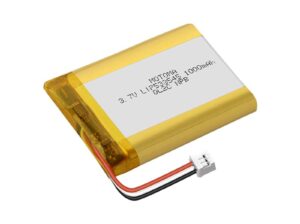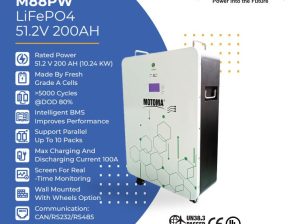IEEE 1547: Enabling the Integration of Distributed Energy Resources
The power grid landscape has undergone a revolution with the increasing adoption of distributed energy resources (DERs) like solar panels and wind turbines. To ensure grid stability and facilitate their smooth integration, it is crucial to adhere to international standards. IEEE 1547 is one such standard that focuses on the interconnection and interoperability of DERs with the electrical grid. In this blog post, we will delve into the importance of IEEE 1547, its essential features and requirements, and the advantages it provides in terms of reliable grid operation, improved safety, and optimal utilization of renewable energy resources.
IEEE 1547: Facilitating DER Integration and Grid Interconnection
Guidelines have been set in place by IEEE 1547 to ensure that DERs can safely and efficiently connect and function within the power grid infrastructure. This not only supports the stable exchange of power between DERs and the grid but also encourages the utilization of renewable energy. In order to fully understand the features and requirements of IEEE 1547, let’s explore them in greater detail.
Key Features and Requirements of IEEE 1547
IEEE 1547 encompasses various aspects related to the interconnection and operation of DERs. Here are some of the key features and requirements of the standard:
- Interconnection Standards: The IEEE 1547 provides a set of guidelines that dictate how Distributed Energy Resources (DERs) should be connected to the grid. These guidelines include requirements for regulating voltage and frequency, maintaining power quality, and coordinating protection measures. By following these standards, DERs can operate in accordance with grid specifications and help enhance the stability and reliability of the electrical system as a whole.
- Grid Support Functions: The significance of grid support functions offered by DERs is underscored by the standard. Such functions include maintaining voltage and frequency, controlling reactive power, and providing grid protection. Adherence to IEEE 1547 guarantees that DERs can effectively sustain the grid during regular and unusual operations, enhancing its stability and efficiency.
- Safety Considerations: The safety of interconnecting DERs is addressed in IEEE 1547, which outlines specific requirements and guidelines for ensuring protection against electric shock, overcurrent incidents, and fault detection. It also includes isolation mechanisms to safeguard against potential hazards. Compliance with this standard is crucial in ensuring the safe design and operation of DER installations, benefiting not just grid personnel but also the general public.
- Power Quality: The IEEE 1547 standard outlines specific power quality guidelines for DERs, ensuring that the power they supply to the grid adheres to acceptable standards. These guidelines incorporate limits on fluctuations in voltage, harmonics, and flicker. Adhering to these guidelines ensures that DERs do not cause any significant power quality problems that might affect the functionality of other linked devices.
Benefits of IEEE 1547
Compliance with IEEE 1547 brings several benefits for utilities, DER manufacturers, and end-users. Let’s explore some of the key advantages:
- Grid Stability and Reliability: IEEE 1547 promotes the seamless integration of DERs into the grid, supporting grid stability and reliability. Compliance with the standard ensures that DERs operate in a coordinated manner, providing grid support functions and responding to voltage and frequency fluctuations. This enables the reliable and efficient integration of renewable energy resources while maintaining grid stability.
- Efficient Utilization of Renewable Energy: IEEE 1547 compliance is crucial for DERs to optimize the use of renewable energy resources. The standard’s guidelines for power quality and grid support functions guarantee that DERs supply dependable and eco-friendly power to the grid. This promotes the adoption of renewable energy, reduces dependence on non-renewable sources, and advances a sustainable energy future.
- Enhanced Safety: IEEE 1547 prioritizes safety considerations for DER interconnection. Compliance with the standard ensures the implementation of appropriate protection mechanisms, fault detection systems, and safety measures. This protects grid personnel, maintenance workers, and the public from electrical hazards associated with DER installations.
- Interoperability and Compatibility:IEEE 1547 aims to enhance interoperability and compatibility between various DERs and grid systems. Adhering to this standard guarantees that DERs can connect to the grid smoothly, without any compatibility-related problems or interruptions. This fosters innovation and choice in renewable energy by enabling the integration of a diverse range of DER technologies.market.
- Regulatory Compliance: Regulatory authorities and utility companies widely acknowledge and accept IEEE 1547. Adherence to this standard simplifies DER installations’ certification and approval process, ensuring compliance with relevant regulations and standards. As a result, DERs can be adopted more easily, and the interconnection process is streamlined.
Conclusion
The seamless integration of distributed energy resources into the electrical grid is made possible by IEEE 1547, a crucial international standard. Compliance with this standard ensures that DERs can operate safely, reliably, and efficiently, ultimately supporting grid stability and improving the utilization of renewable energy. IEEE 1547 sets rigorous requirements for interconnection standards, grid support functions, safety considerations, and power quality. By adhering to these requirements, utilities, DER manufacturers, and end-users can benefit from improved grid stability, enhanced safety, efficient renewable energy utilization, interoperability, and regulatory compliance. As DERs continue to shape the future of the power grid, adherence to IEEE 1547 is vital to achieving a sustainable and resilient energy system.
You must be logged in to post a comment.


